序引
本系列文章将介绍iOS开发中的UITableView控件,将会分成四篇文章完整的讲述UITableView的具体使用方法和注意点,文章编写周期会长一些,由于本人还在学习iOS开发阶段,有些东西可能会描述不对或错误,Markdown排版也不是特别好,欢迎各位读者指点其中不对的地方。
本文主要涉及的知识点:
- UITableView的概念
- UITableView显示数据的两种样式
- UITableView的使用步骤
- UITableView的常见属性
- UITableViewCell的基本概念
- UITableViewCell的常见属性
- UITableView的代理方法
- UITableViewController的讲解
- UITableViewCell的重用
1. UITableView的概念
- 在iOS开发中,要实现展示列表数据,就常用的做法就是使用UITableView
- UITbaleView继承自UIScrollView,因此支持垂直滚动,而且性能极佳
2. UITableView显示数据的两种样式
单组样式
- UITableViewStylePlain
- 展示单组数据,没有分组
- 例如:
分组样式
- UITableViewStyleGrouped
- 展示多组数据,有分组,每一组可以有不同的行数
- 例如:
3. UITableView的使用步骤
第一步:设置数据源对象
self.tableView.dataSource = self;- 数据源对象一般设置为当前控制器
设置的语句写在控制器的
- (void)viewDidLoad方法中- (void)viewDidLoad { [super viewDidLoad]; // 设置数据源对象为当前控制器 self.tableView.dataSource = self; }
第二步:设置的数据源对象要遵守协议
设置为数据源对象的类一定要遵守
UITableViewDataSource协议@interface ViewController () <UITableViewDataSource> @end
第三步:实现数据源协议中的方法
- 单组数据必须实现数据源中的两个方法
多行数据必须实现数据源中的三个方法
- (NSInteger)numberOfSectionsInTableView:(UITableView *)tableView- 告诉tableView一共有多少组数据
- 单组数据可以不用实现(因为只有一组数据,系统默认为1),多组数据必须实现
参数section:传入当前是第几组,当样式为单组数据的时候,section永远为0
- (NSInteger)numberOfSectionsInTableView:(UITableView *)tableView { return 4; }
- (NSInteger)tableView:(UITableView *)tableView numberOfRowsInSection:(NSInteger)section- 告诉tableView每一组有多少行数据
- 单组数据和多组数据都必须实现
- 参数section:传入当前是第几组
参数
- (NSInteger)tableView:(UITableView *)tableView numberOfRowsInSection:(NSInteger)section { if (section == 0) { return 2; // 第0组有两行数据 } else if (section == 1) { return 6; // 第1组有六行数据 } else if (section == 2) { return 6; // 第2组有六行数据 } else { return 1; // 第3组有一行数据 } }
- (UITableViewCell *)tableView:(UITableView *)tableView cellForRowAtIndexPath:(NSIndexPath *)indexPath- 告诉tableView每一行显示的内容
- tableView每一行的内容一定是
UITableViewCell - 单组数据和多组数据都必须实现
参数indexPath:indexPath有两个属性,
indexPath.section传入当前是第几组,indexPath.row传入当前是第几行- (UITableViewCell *)tableView:(UITableView *)tableView cellForRowAtIndexPath:(NSIndexPath *)indexPath { UITableViewCell *cell = [[UITableViewCell alloc] init]; if (indexPath.section == 0) { if (indexPath.row == 0) { // 第0组第0行显示的数据为“通用” cell.textLabel.text = @"通用"; } else if (indexPath.row == 1) { // 第0组第1行显示的数据为“隐私” cell.textLabel.text = @"隐私"; } } else { // 其他组显示的数据为自己的组号和行号 cell.textLabel.text = [NSString stringWithFormat:@"%zd组%zd行-其他数据", indexPath.section,indexPath.row]; } return cell; }
- (NSString *)tableView:(UITableView *)tableView titleForHeaderInSection:(NSInteger)section- 告诉tableView每一组的头部标题
参数section:传入当前是第几组
- (NSString *)tableView:(UITableView *)tableView titleForHeaderInSection:(NSInteger)section { if (section == 0) { return @"头部标题"; } else { return @"头部标题"; } }
- (NSString *)tableView:(UITableView *)tableView titleForFooterInSection:(NSInteger)section- 告诉tableView每一组的尾部标题
参数section:传入当前是第几组
- (NSString *)tableView:(UITableView *)tableView titleForFooterInSection:(NSInteger)section { if (section == 0) { return @"尾部标题"; } else { return @"尾部标题"; } }
4. UITableView的常见属性
设置行高的高度:
属性: @property (nonatomic) CGFloat rowHeight; 使用格式: self.tableView.rowHeight = 70; 说明: 默认是44设置每一组的头部高度:
属性: @property (nonatomic) CGFloat sectionHeaderHeight; 使用格式: self.tableView.sectionHeaderHeight = 50;设置分割线的颜色:
属性: @property (nonatomic, strong) UIColor *separatorColor 使用格式: self.tableView.separatorColor = [UIColor redColor]; 说明: 设置[UIColor clearColor]代表隐藏分割线,[UIColor clearColor]为透明色对象设置分割线的样式:
属性: @property (nonatomic) UITableViewCellSeparatorStyle separatorStyle 使用格式: self.tableView.separatorStyle = UITableViewCellSeparatorStyleSingleLine; 枚举UITableViewCellSeparatorStyle常用的枚举元素: UITableViewCellSeparatorStyleNone // 隐藏分割线 UITableViewCellSeparatorStyleSingleLine // 默认样式 UITableViewCellSeparatorStyleSingleLineEtched // 仅支持在grouped样式,但是和默认样式没什么区别设置表头控件:
属性: @property (nonatomic, strong) UIView *tableHeaderView; 使用格式: self.tableView.tableHeaderView = [[UISwitch alloc] init];设置表尾控件:
属性: @property (nonatomic, strong) UIView *tableFooterView; 使用格式: self.tableView.tableFooterView = [[UISwitch alloc] init];
5. UITableViewCell的基本概念
UITableView的每一行都是一个UITableViewCellUITableView内部有个默认的子控件:contentView,填充整个UITableViewCell的父控件UITableView的子控件实质都在contentView
6. UITableViewCell的常见属性
设置cell右边的指示控件:
属性: @property (nonatomic, strong) UIView *accessoryView; 使用格式: cell.accessoryView = [[UISwitch alloc] init];设置cell右边的指示样式:
属性: @property (nonatomic) UITableViewCellAccessoryType accessoryType; 使用格式: cell.accessoryType = UITableViewCellAccessoryDisclosureIndicator; 枚举UITableViewCellSeparatorStyle常用的枚举元素: UITableViewCellSeparatorStyleNone // 隐藏分割线 UITableViewCellSeparatorStyleSingleLine // 默认样式 UITableViewCellSeparatorStyleSingleLineEtched //设置cell的选中样式:
属性: @property (nonatomic) UITableViewCellSelectionStyle selectionStyle; 使用格式: cell.selectionStyle = UITableViewCellSelectionStyleNone; 枚举UITableViewCellSelectionStyle常用的枚举元素: UITableViewCellSelectionStyleNone // 不能选中 UITableViewCellSelectionStyleBlue UITableViewCellSelectionStyleGray UITableViewCellSelectionStyleDefault设置cell的背景控件:
属性: @property (nonatomic, strong) UIView *backgroundView; 使用格式: UIView *bg = [[UIView alloc] init]; bg.backgroundColor = [UIColor redColor]; cell.backgroundView = bg;设置cell的背景颜色:
属性: @property(nullable, nonatomic,copy) UIColor *backgroundColor 使用格式: cell.backgroundColor = [UIColor blueColor]; 说明: 还可以设置cell的子控件背景图片 cell.textLabel.backgroundColor = [UIColor greenColor];设置cell选中的背景view:
属性: @property (nonatomic, strong) UIView *selectedBackgroundView; 使用格式: UIView *seletedBg = [[UIView alloc] init]; seletedBg.backgroundColor = [UIColor purpleColor]; cell.selectedBackgroundView = seletedBg;
7. UITableView的代理方法
当选中某一行cell的时候就会调用这个方法:
方法声明: - (void)tableView:(UITableView *)tableView didSelectRowAtIndexPath:(NSIndexPath *)indexPath; 使用格式: - (void)tableView:(UITableView *)tableView didSelectRowAtIndexPath:(NSIndexPath *)indexPath { NSLog(@"选中第%zd行", indexPath.row); }当取消选中某一行cell的时候就会调用这个方法:
方法声明: - (void)tableView:(UITableView *)tableView didDeselectRowAtIndexPath:(NSIndexPath *)indexPath; 使用格式: - (void)tableView:(UITableView *)tableView didDeselectRowAtIndexPath:(NSIndexPath *)indexPath { NSLog(@"取消选中第%zd行", indexPath.row); }返回每一组的头部控件:
方法声明: - (UIView *)tableView:(UITableView *)tableView viewForHeaderInSection:(NSInteger)section; 使用格式: - (UIView *)tableView:(UITableView *)tableView viewForHeaderInSection:(NSInteger)section { return [UIButton buttonWithType:UIButtonTypeContactAdd]; }返回每一组的尾部控件:
方法声明: - (UIView *)tableView:(UITableView *)tableView viewForFooterInSection:(NSInteger)section; 使用格式: - (UIView *)tableView:(UITableView *)tableView viewForFooterInSection:(NSInteger)section { return [[UISwitch alloc] init]; }返回每一组的头部高度:
方法声明: - (CGFloat)tableView:(UITableView *)tableView heightForHeaderInSection:(NSInteger)section; 使用格式: - (CGFloat)tableView:(UITableView *)tableView heightForHeaderInSection:(NSInteger)section { return 100; }返回每一组的尾部高度:
方法声明: - (CGFloat)tableView:(UITableView *)tableView heightForFooterInSection:(NSInteger)section; 使用格式: - (CGFloat)tableView:(UITableView *)tableView heightForFooterInSection:(NSInteger)section { return 100; }返回每一行cell的高度:
方法声明: - (CGFloat)tableView:(UITableView *)tableView heightForRowAtIndexPath:(NSIndexPath *)indexPath; 使用格式: - (CGFloat)tableView:(UITableView *)tableView heightForRowAtIndexPath:(NSIndexPath *)indexPath { if (indexPath.row == 0) { return 100; } else { return 50; } }
8. UITableViewController的讲解
将控制器设置为UITableView的方法和步骤
- 第一步:创建新的类或修改原有的ViewController类,继承自UITableViewController
- 第二步:在Main.storyboard中删除自带的
UIViewController控制器,然后往里面拖一个UITableViewController控制器
- 第三步:修改新拖进来的
TableViewController控制器的自定义类名为第一步中继承自UITableViewController类的类名
- 第四步:勾选
TableViewController控制器为程序启动第一个加载的控制器
注意点:
tableVieController有个tableView属性,指向一个tableViewtableView的dataSource和delegate属性指向的就是这个控制器,并且这个控制器已经遵守了UITableViewDataSource和UITableViewDelegate- 每个控制器的内部都有一个
view属性,在tableVieController中,view和tableView属性指向的是同一个对象(控制器的view就是tableView)
9. UITableViewCell的重用
- 原因
- iOS设备的内存有限,如果用UITableView显示成千上万条数据,就需要成千上万个
UITableViewCell对象的话,那将会耗尽iOS设备的内存 - 要解决该问题,需要重用
UITableViewCell对象
- iOS设备的内存有限,如果用UITableView显示成千上万条数据,就需要成千上万个
- 原理:
- 当滚动列表时,部分
UITableViewCell会移出窗口,UITableView会将窗口外的UITableViewCell放入一个缓存池中,等待重用 - 当
UITableView要求dataSource返回UITableViewCell时,dataSource会先查看这个对象池,如果池中有未使用的UITableViewCell,dataSource会用新的数据配置这个UITableViewCell,然后返回给UITableView,重新显示到窗口中,从而避免创建新的UITableViewCell对象
- 当滚动列表时,部分
Cell重用的实现代码
方法一:
- 定义一个cell的重用标识
- 根据这个ID去缓存池中看有没有可循环利用的cell
- 如果缓存池中没有可循环利用的cell,自己创建
- (UITableViewCell *)tableView:(UITableView *)tableView cellForRowAtIndexPath:(NSIndexPath *)indexPath { // 1. 定义一个重用标识 static NSString *ID = @"A"; // 2. 根据这个ID去缓存池中看有没有可循环利用的cell UITableViewCell *cell = [tableView dequeueReusableCellWithIdentifier:@"A"]; // 3. 如果缓存池中没有可循环利用的cell, 自己创建 if (cell == nil) { cell = [[UITableViewCell alloc] initWithStyle:UITableViewCellStyleDefault reuseIdentifier:@"A"]; } return cell; }
方法二:
- 定义一个cell的重用标识
- 根据这个ID去缓存池中看有没有可循环利用的cell
- 如果缓存池中没有会看有没有根据ID这个标识注册对应的cell类型
- 如果有注册,会根据这个ID创建对应的类型的cell,并且会绑定这个ID标识,返回这个cell
// 1. 定义一个重用标识 static NSString *ID = @"A"; - (void)viewDidLoad { [super viewDidLoad]; // 3. 根据ID 这个标识 注册 对应的cell类型是UITableViewCell [self.tableView registerClass:[YTTableViewCell class] forCellReuseIdentifier:ID]; } - (UITableViewCell *)tableView:(UITableView *)tableView cellForRowAtIndexPath:(NSIndexPath *)indexPath { // 2. 根据这个ID去缓存池中看有没有可循环利用的cell YTTableViewCell *cell = [tableView dequeueReusableCellWithIdentifier:ID]; return cell; }








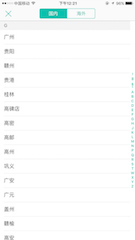
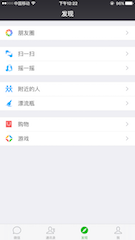
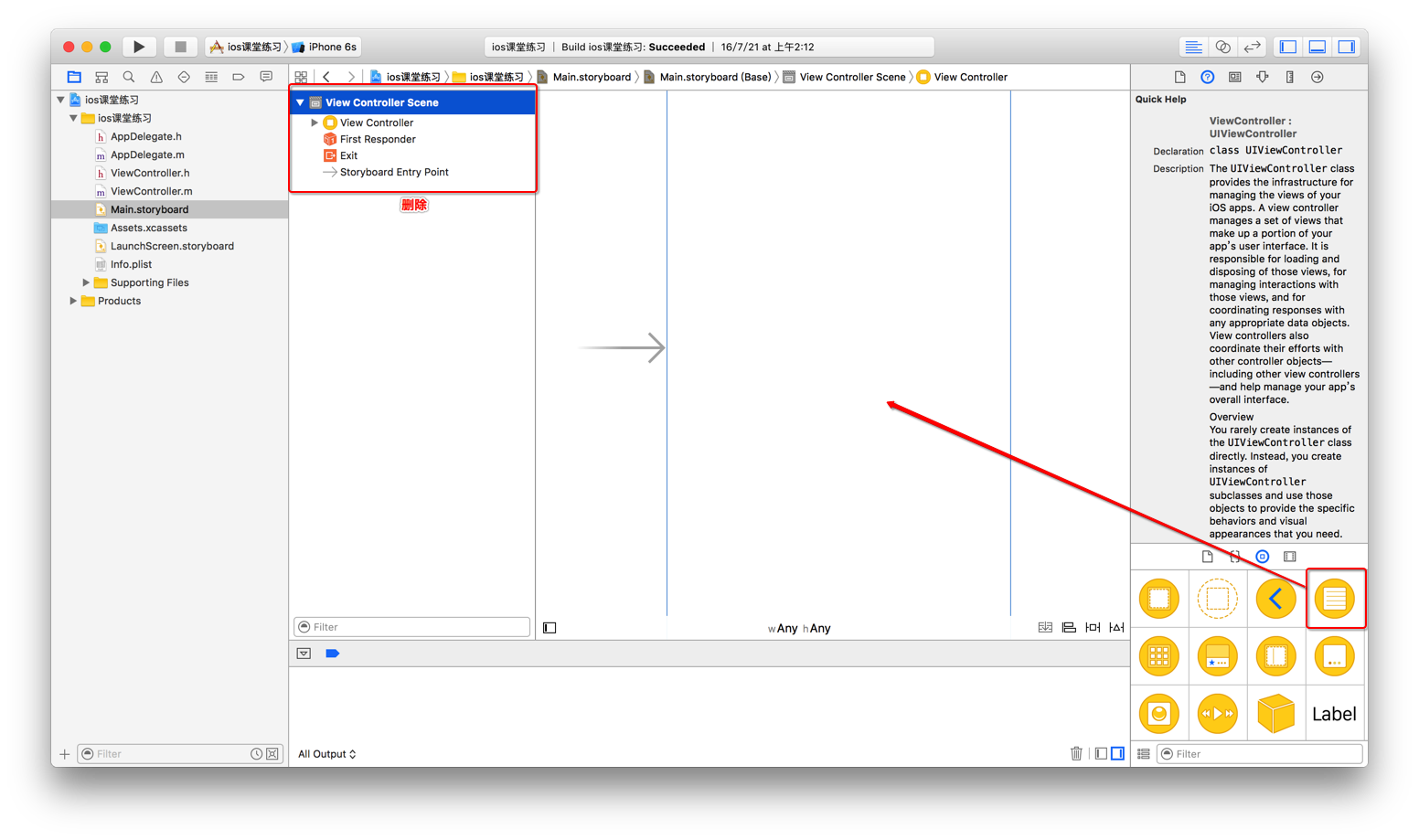
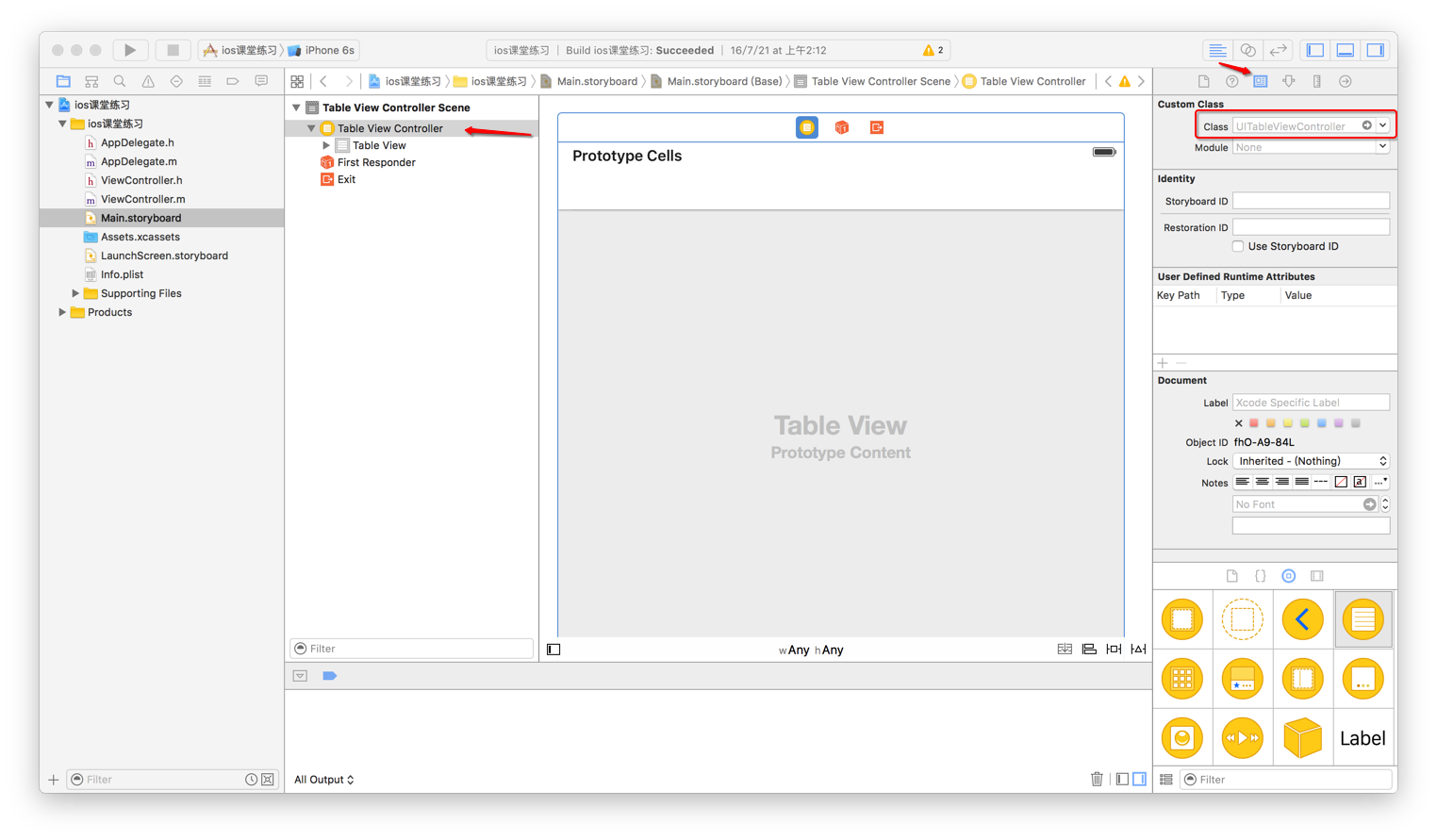
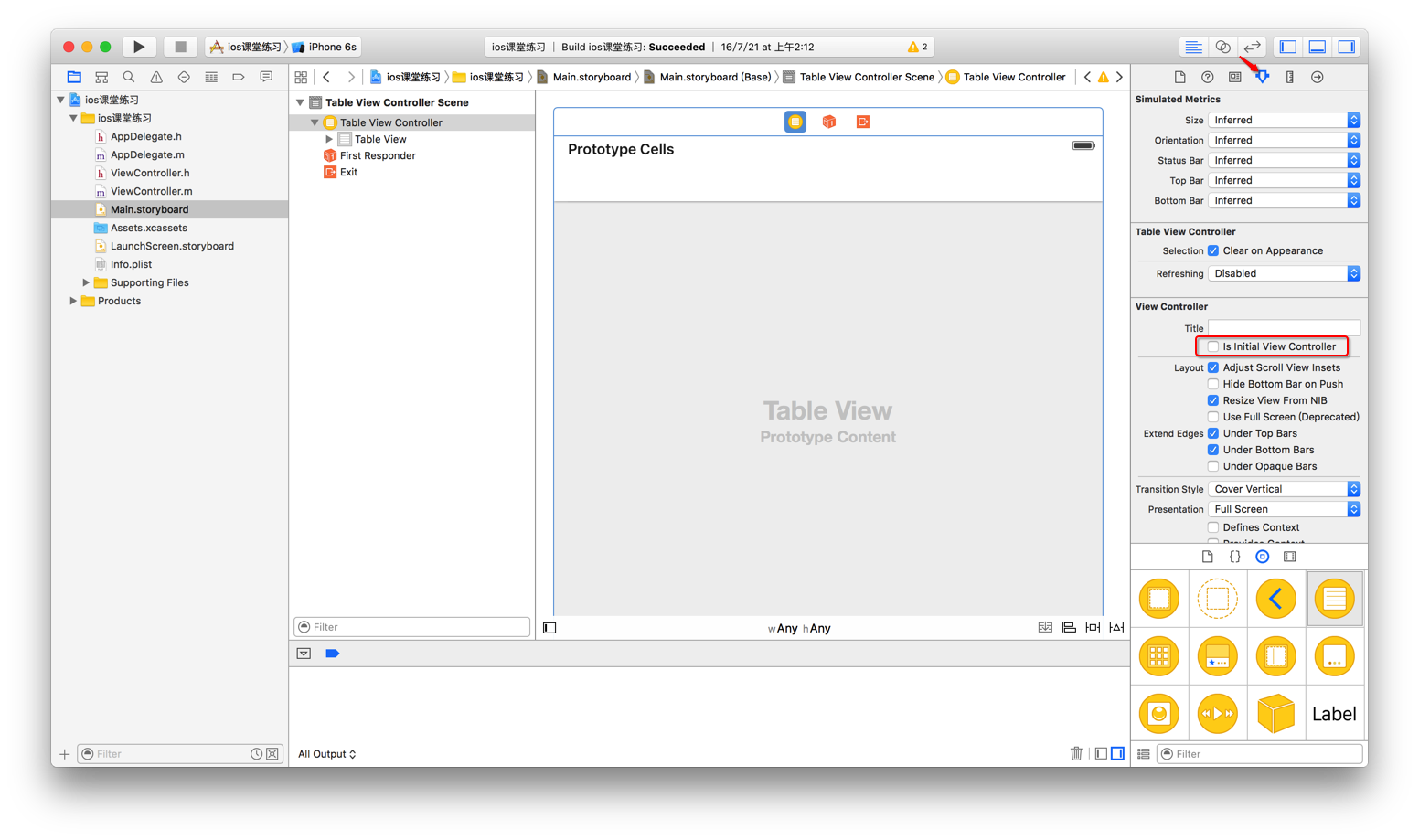













 1218
1218











 被折叠的 条评论
为什么被折叠?
被折叠的 条评论
为什么被折叠?








